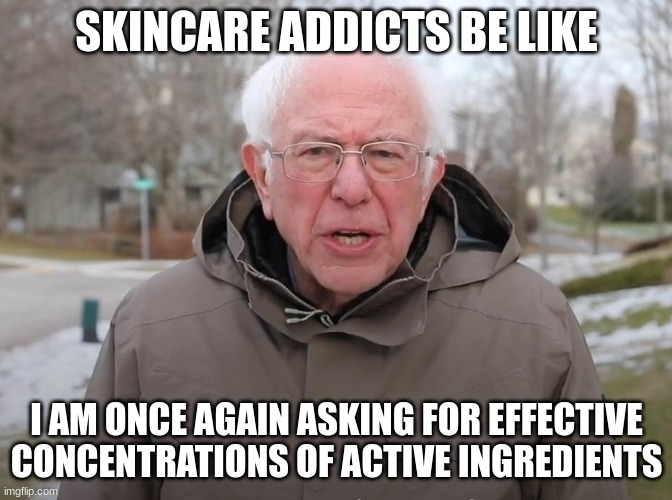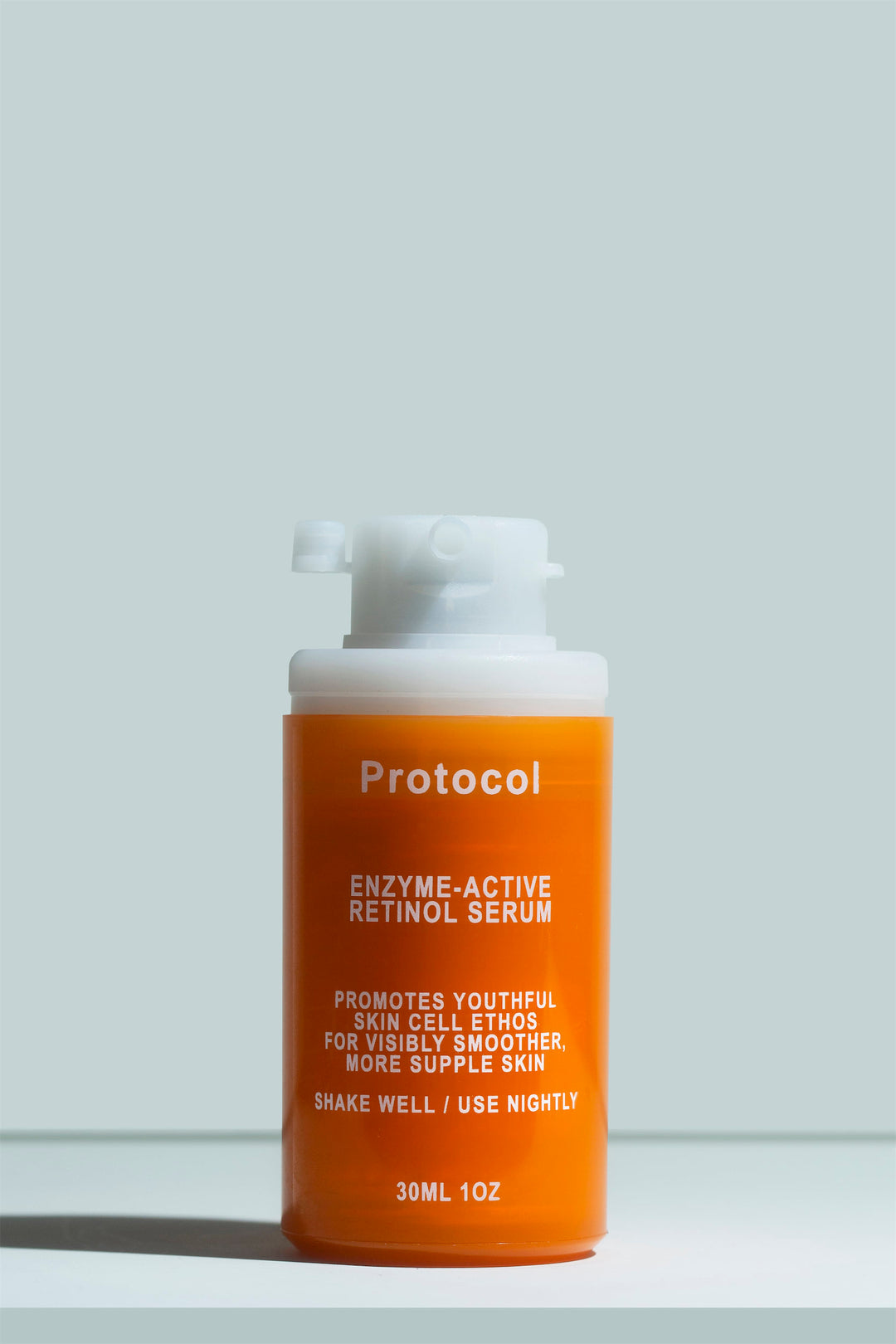Why the Skincare 1% Line Matters (+ Our Ctrl+F Hack)


Wanna learn our favorite skincare shopping hack? Learning this trick can be a little infuriating, but that’s exactly why it’s so important.
This hack lets us know if a skincare product contains meaningful percentages of the active ingredients advertised.
We call it the “command+F” or “ctrl+F” hack (MAC and Windows users are both welcome within the warm embrace of Protocol Lab). Based on this trick, we identify what cosmetic chemists call the skincare 1% line, which gives us a hint as to how much of an ingredient like vitamin C or retinol was actually used.
What is the 1% line in skincare?
As explained by cosmetic chemist Perry Romanowski, “1% line refers to the place in the list of ingredients which indicates where the concentration of ingredients is less than 1%.”
Product labels list ingredients based on the concentration, from highest to lowest. But, after that 1% line, ingredients no longer have to be listed in order.
Cosmetic chemists use the 1% exercise to re-create cosmetic formulas. But for us consumers, this is a useful tool of analysis. Any ingredient that shows up below the 1% line is therefore being used at a concentration that’s less than 1%.
With some ingredients, like retinaldehyde, 1% would be excessive, but in most other cases, including vitamin C, niacinamide, hyaluronic acid, and glycolic acid, we need a higher percentage to see real benefits.
So how do we identify the 1% line? It’s simple. Some ingredients (especially preservatives) will never be used at more than 1%, so learning to identify them will direct you.
- Parabens have become less popular in recent years, but they’re also always used below 1%.
- Sodium benzoate, potassium sorbate, and sodium dehydroacetate are also preservatives never used at more than 1%.
- Xantham gum is a thickener. Unless the product you’re considering is very viscous, this ingredient won’t be used at more than 1%.
- Fragrances and essential oils are rarely used at a concentration higher than 1%, and ideally far below it. We try to avoid them altogether because they can be sensitizing.
How do you find the percentage of an ingredient?
Step 1: Know what you’re looking for
It’s important to know the internationally-recognized chemical name of the “hero” ingredient. For example, with vitamin C, the main format is ascorbic acid. INCI Decoder is a great resource for looking up INCI names (even if their listed ingredients for our products are off).
Sometimes, brands will use significantly less potent derivatives of vitamin C, like sodium ascorbyl phosphate or ascorbyl glucoside. We discuss why those derivatives are largely useless in our guide to finding a vitamin C serum that works.
Step 2: Find the ingredient list
Since most of us are shopping online these days, we use computer shortcuts to find the specific term on the page, instead of having to scan the entire ingredient list.
So first, use “Command+F” or “Ctrl+F” to search for the ingredient list. All too often, brands hide it in a subsection, so you may have to click around a few times.
If the brand doesn’t list the ingredients anywhere on its main website, you can look the product up on third-party retailers like Sephora or Ulta.
Step 3: Find your active
Then, once you’ve uncovered the ingredient list, use the same keyboard shortcut to find the active ingredient you’re looking for.
With vitamin C, we like to search for the first three letters: “asc”. This immediately reveals ascorbic acid as well as its derivatives. With hyaluronic acid, we search for “hya” so we can also identify sodium hyaluronate, which is the less-effective sodium salt of hyaluronic acid.
If the ingredient is listed within the first three or four ingredients, you’re looking at what could potentially be a decent formula!
That said, there are a few other factors to consider, like the stability of the packaging and the pH, but at least you know you’re off to a good start.
Step 4: Check the neighbors
Since we want to use an ingredient like vitamin C at 10%, the next step is to look at which ingredients show up before ascorbic acid.
Do you see phenoxyethanol, xantham gum, fragrance, or essential oil listed before it? If so, it’s definitely below the 1% line, and not worthy of your time and money.
Note: Sometimes it’s easier to flip steps 3 and 4. In many cases, we’ll first search for phenoxyethanol, and then check to see which “hero” ingredients are used after it. This allows us to quickly check all of the ingredients before the 1% line.
And now, here are some examples:
Ingredient list that shows less than 1% ascorbic acid

10% ascorbic acid as claimed in the marketing

Why do brands claim higher percentages?
Learning this trick might raise a big question:
Why do some brands claim to use 10% of an ingredient, when the ingredient list reveals a different story?
That’s where those derivatives we mentioned earlier play a big role. The easiest way to claim a higher percentage is to use stable but ineffective derivatives of the star ingredient that bolster your percentage claim.
Then, if you feel so inclined, you can sprinkle in just a few drops of the actually effective format so you can claim it’s in there. We see this happen with high-end brands a lot more often, while budget brands simply opt for only using a derivative format.
Wanna skip the guessing games? Shop Protocol Skincare products - effective percentage levels, guaranteed:
We’re talking skincare here, Bernie
We’re not big fans of the 1% but we do enjoy identifying the 1% skincare line. It gives a glimpse into how skincare is made and, more importantly, helps us identify useless, overpriced products.
There are a few other things to keep in mind when shopping for skincare, though.
First, some ingredients don’t need to be used in high percentages - take retinaldehyde, for instance, which is plenty effective at 0.1%.
Second, there are other factors that impact efficacy. Some ingredients are very picky about pH (looking at you, AHA) and others need airtight containers to stay active.
But why are we so passionate about these nitpicky factors? Because we like skincare that works. We bet you prefer the same.




